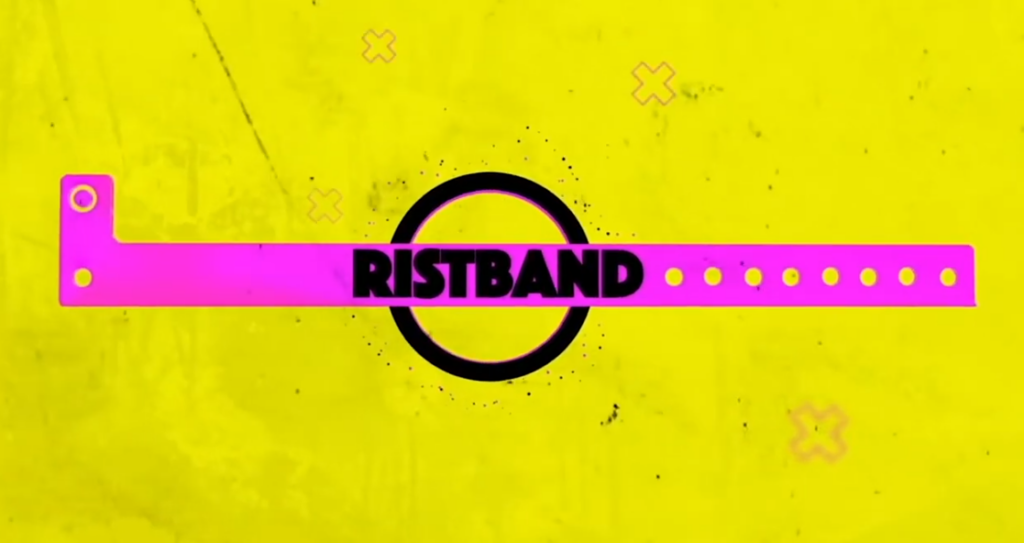Music and technology are no longer separate domains, they’re converging into a unified creative frontier.
In an era where the music industry is being reimagined by streaming platforms, AI-generated content, and algorithmic discovery, a new force is emerging, not from record labels or tech giants, but from the artists themselves. At the forefront of this movement is Anne McKinnon, CEO of Ristband, whose work at the intersection of live performance, immersive technology, and digital art is creating a new blueprint for how music can be experienced and monetized. Ristband isn’t just building tools, it’s building a future where artists can bypass outdated industry models, connect directly with audiences, and redefine what it means to tour, perform, and engage.
This evolution was on full display at SXSW 2025, where Ristband’s Future x Music Showcase offered a glimpse into what tomorrow’s concerts might look and feel like. It was a vibrant, genre-defying collision of sound, visuals, and virtual landscapes, featuring everything from traditional sets to modular mixed reality concerts that ran multiple times each night. In a festival known for innovation, this showcase didn’t just fit in, it stood out as a declaration that the next era of music is immersive, interactive, and already here.
XR Update met up with Anne McKinnon at SXSW and asked her about her work in music and technology. She told us,“The future of live music won’t be dictated by hype, technology companies, or media spin.” Adding, “It will be guided by what has always moved the industry—songwriting, unforgettable concerts, and the connection between artists and fans. Immersive experiences won’t replace this. They will elevate it.”
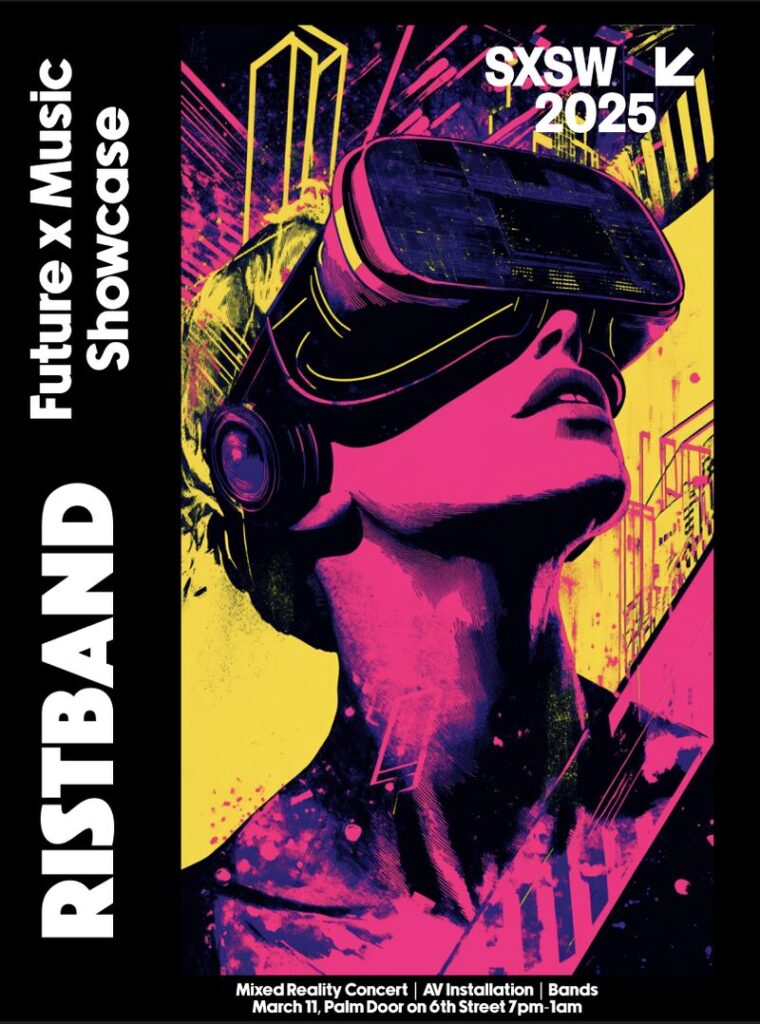
At this year’s SXSW, that philosophy came to life at the Ristband Future x Music Showcase, a vibrant collision of live music, immersive technology, and digital art. What began four years ago as a modest mixed reality concert inside a 100-person theater has now exploded into a full-blown takeover of the British Music Embassy and Future Art and Culture venues. With multiple bands, real-time AV installations, and modular VR concerts running in tandem, the event marked a major shift, not just in music performance, but in the business of music itself.
This is more than a showcase. It’s about Ristband’s bold vision for a new music economy, and how immersive technology, spatial computing, and creative innovation are giving rise to a generation of artists who can thrive without the old industry gatekeepers.
Anne McKinnon’s Vision: Music Without Boundaries
Ristband is reshaping what it means to tour, perform, and connect. Their mixed reality concert model allows artists to perform multiple immersive shows in a single night, sometimes across different venues, often without being physically present. The result? A sustainable touring model that lowers costs, increases reach, and reinvents what “live music” can be.
“Immersive experiences act as an extension of what an artist is already doing, not a replacement,” says McKinnon. She cites artists like Pivots and Venice Bleach, both of whom have performed their mixed reality concerts worldwide, even before releasing full EPs. Their shows have opened film festivals, filled art galleries, and brought in enough income to support recording sessions, all without label support.
The key, McKinnon says, is modularity. “Our immersive concerts and AV installations are designed to fit into a carry-on bag. Artists can perform in a warehouse, a gallery, or at a tech conference. And the experience is scalable.”
This approach isn’t just for superstar acts. It’s for emerging artists, those who are often overlooked by traditional festival lineups and streaming algorithms. “In a world where 100,000 songs are uploaded to Spotify every day,” McKinnon adds, “immersive gives artists another way to rise above the noise.”
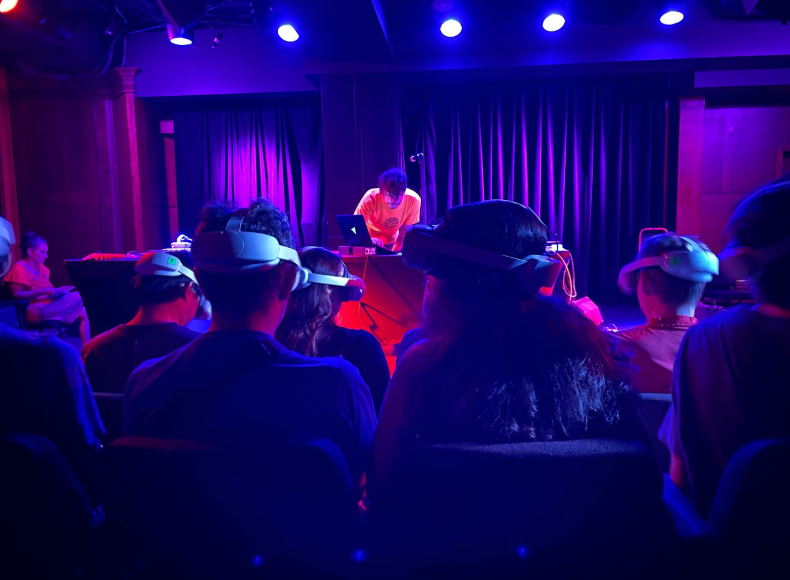
A Showcase Built for the Future
At SXSW 2025, Ristband’s Future x Music Showcase demonstrated the full potential of its immersive music model. The event brought together live sets from seven genre-defying artists, including a standout performance by the UK band Pivots, whose mixed reality concert combined VR headsets with reactive LED visuals built using game engines and Maxon C4D.
Surrounding these performances were a range of AV installations and projection-based experiences that transformed the venue into an interactive, multi-sensory space. The entire showcase was elevated by spatial audio integration, powered by d&b audiotechnik’s Soundscape system, which wrapped the audience in a fully immersive sonic environment.
The atmosphere was electric, equal parts gritty underground club, digital art gallery, and experimental performance space. In a city famous for blending tech, film, gaming, and music, Ristband made it clear, the future of live music is immersive, interactive, and scalable.
Roman Rappak and Pivots: Building a New Music Model
XR Update also talked with frontman Roman Rappak, bassist and vocalist of Pivots and co-founder of Ristband. He told us that he spent the past decade experimenting with the intersection of music and technology. “You saw the really indie early days show,” he recalls of their first SXSW appearance as the band Miro Shot. “Tiny theater, basic headsets, gaffer tape holding things together. But SXSW let us experiment, cut what didn’t work, and refine what did.”
Today, that experiment has become a fully realized experience. Pivots’ whose sound can only be described as something like Dystopian Dreamwave meets Neon Nocturne meets Cyberwave Noir, played a set of music at the British Music Embassy that was a stunning blend of post-punk futurism, sample-based noise, and spatially reactive visuals. Their single “She Wears It Well” played out like a cybernetic goth lullaby in a dreamscape that seamlessly merged reality with virtual immersion. It leaned on broken structure (but in the most amazing way) that had post-punk and darkwave roots. According to Rappik and the band, that was the goal!

“A good live performance should have a kind of organized chaos,” Rappak says. “Technology, when done right, becomes an extension of the self, like an instrument. It’s not about control, it’s about symbiosis.” But beyond the artistry lies a deeper argument: that immersive tech is giving birth to an entirely new musical genre, one built not just on sound, but on experience.
“We’re at the precipice of a new era,” said Rappak. “Every major musical revolution, rock and roll, hip-hop, electronic, was driven by a new technology. Today, it’s spatial audio, game engines, and interactive design.”
And the economics are just as transformative. Before, you needed tour support, a label, and streams. Now, Pivots are getting booked at festivals like OFFF Barcelona because of their immersive concerts. “We’re not replacing live music, we’re expanding it.”
According to Rappak, we are standing at the edge of a transformative era in music, one that redefines not only how music is performed and experienced, but how it lives and thrives in the world. The shows Pivots are building now, using game engines, spatial audio, and immersive technology, are just the tip of the iceberg. These aren’t just novel formats, they are early blueprints for a fundamentally different kind of artistic existence.
Rappak tells us that trying to explain this to people who’ve been entrenched in the traditional music industry often proves challenging. Their understanding of success, distribution, and engagement was shaped by an entirely different system. So instead, the conversation now is better aimed at those who are actively building the future, artists, technologists, creators who use game engines, and people who are ready to imagine new ways forward.
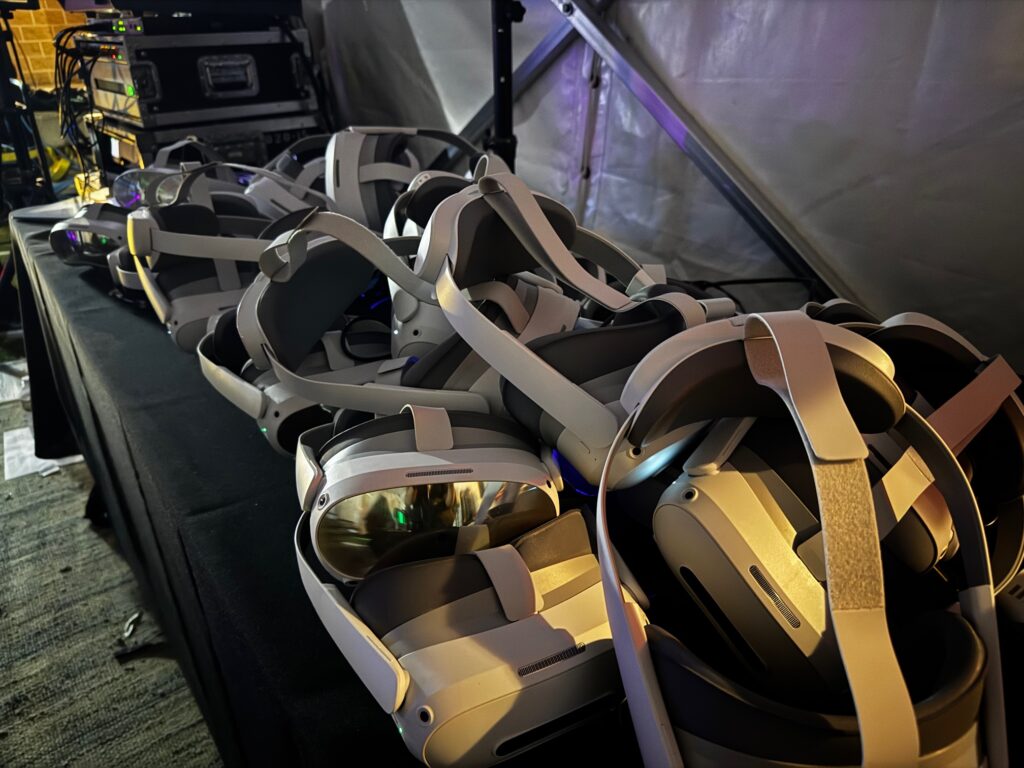
Every day, 100,000 new tracks are uploaded to Spotify. The sheer noise makes it harder than ever for artists to reach their audiences. Each stream pays roughly $0.003, while two decades ago, a single fan might’ve paid $10 for an album. That economic model, the one most musicians have been taught to chase, is gone. It’s no longer viable. We’ve seen countless artists speak up about this. But while one system fades, another is emerging. And it’s not about “tech,” or “VR,” or even “gaming” as isolated categories. It’s about a seismic shift in how humans consume media, arguably the biggest in a thousand years.
Today, we are seeing over 3 billion gamers across the globe. The immersive entertainment market was valued at over $114 billion in 2024. On any given day, more than a million people are inside platforms like Fortnite, not just playing, but socializing, exploring, discovering culture. This is a world the traditional music industry doesn’t know how to access. Its business models don’t align with the behaviors of these digital-native audiences. But this new landscape, one rooted in experience, play, and participation, is starving for music, the kind of emotional storytelling that only songs can provide.

The future isn’t waiting for the industry to catch up. It’s already unfolding in digital spaces, virtual stages, and immersive venues said Rappak. And for artists willing to embrace this shift, it opens the door to a new way of existing, one that bypasses the bottlenecks of old and taps directly into a global, interactive, and infinitely scalable community. The music industry may not be invited to this party yet, but artists are and as Rappak enthusiastically says, “it’s going to be a fantastic ride!”
New Tools, New Audiences, New Revenue
Ristband’s model doesn’t stop with VR concerts. Their AV installations and projection-based shows don’t require the artist to be present, allowing performances to take place at galleries, film festivals, and immersive arts venues worldwide. “Suddenly, artists can generate income and build buzz even when they’re not on the road,” says McKinnon.
They’re also working closely with tech partners like d&b audiotechnik, enabling fully spatialized audio that wraps audiences in 360-degree sound. “We can now offer an experience that isn’t just visual, it’s total immersion,” McKinnon explains.
With venues around the world installing systems like Soundscape, the demand for content that can fully utilize immersive infrastructure is growing. Ristband is helping fill that gap, not just with artists like Pivots and Venice Bleach, but also by doing PR for festivals and creators who are redefining music’s relationship with technology.
One such creator is Gadi Sassoon, whose upcoming album Modes of Vibration will be released as a record, live show, installation, and even a virtual instrument called Tetrad.
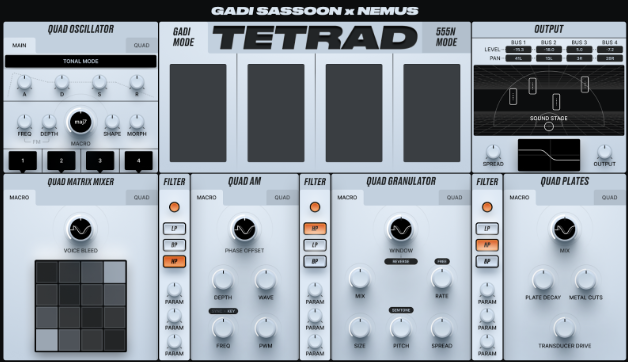
“These are the kinds of crossovers we’re seeing,” McKinnon says. “Music as software, as experience, as presence.”
A New Ecosystem for Music
Ristband’s approach goes beyond innovation, it’s about building a new ecosystem, one where emerging artists can thrive, venues can evolve, and fans can engage in deeper, more personal ways.
McKinnon sums it up best, “This isn’t a replacement for live music. It’s a new layer. Just like music videos didn’t replace concerts, immersive experiences will become another essential touchpoint in an artist’s journey.”
In the end, Ristband isn’t just showing us where music is going. They’re building the road, equipping artists with the tools to not just survive, but to lead the next great movement in sound, performance, and connection.
One of the clearest signs that this shift is not only underway but accelerating is the rise of venues purpose-built for immersive experiences. The Las Vegas Sphere, with its state-of-the-art LED screen wrapping around a 360-degree interior and ultra-precise spatial audio system, represents a new breed of performance space, one where concerts become fully cinematic, multi-sensory journeys. Rather than simply watching a show, audiences are plunged into a narrative world where sound, light, and architecture work in perfect harmony. Meanwhile, Coachella and other major music festivals are leaning heavily into immersive art installations, XR activations, and extended reality performances, transforming music gatherings into interactive landscapes.
These aren’t fringe experiments anymore, they’re setting the standard. Immersive isn’t an add-on; it’s quickly becoming the main event. Festivals, venues, and audiences are all responding to the desire for more depth, more sensation, and more meaning in live experiences. It’s no longer just about hearing the music, it’s about living inside it.
As we look to the future, it’s clear that music and technology are no longer separate domains, they’re converging into a unified creative frontier. Platforms like Ristband are laying the groundwork for a post-streaming music industry where live performance is no longer bound by geography, physical venues, or traditional gatekeepers. The rise of spatial audio, immersive environments, and modular experiences opens up a world where artists become world-builders, and fans aren’t just listeners, they’re participants. In this evolving landscape, the most impactful artists won’t be defined solely by genre or chart position, but by their ability to craft meaningful, multi-sensory experiences that resonate across both digital and physical worlds.
The stage is no longer a place, it’s a dimension. And it’s only just beginning to open up and if SXSW 2025 was any indication, the movement has already begun.


